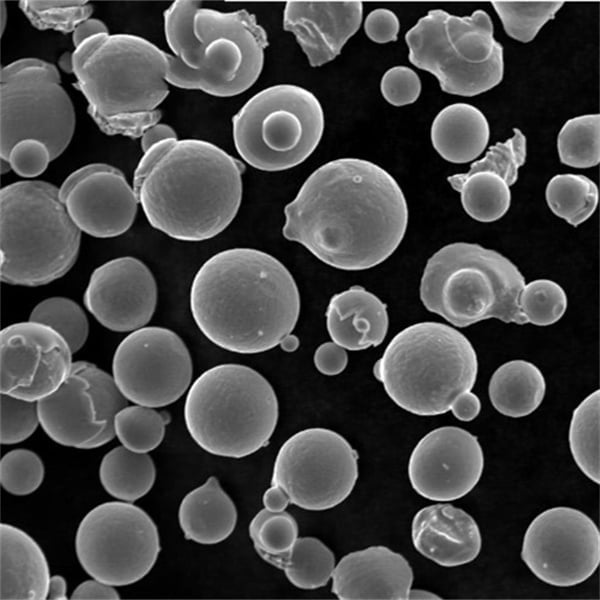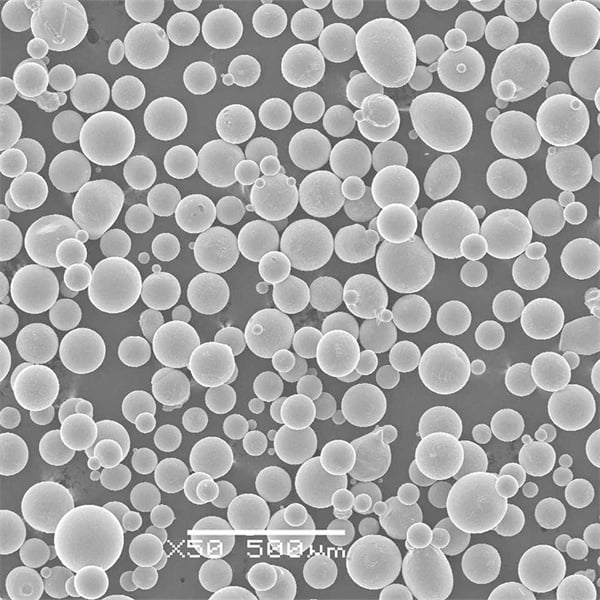Poederbedfusie op basis van laser
Inhoudsopgave
Poederbedfusie op basis van laser (PBF) revolutioneert de maakindustrie en biedt ongekende precisie, efficiëntie en flexibiliteit. Maar wat is het precies en waarom zou het u interesseren? Laten we dieper ingaan op deze innovatieve technologie, de complexiteit ervan, toepassingen en waarom het een game-changer wordt in de wereld van productie.
Overzicht van lasergebaseerde poederbedfusie
Laser-Based Powder Bed Fusion is een additief productieproces dat gebruikmaakt van een krachtige laser om metaalpoederdeeltjes laag voor laag te versmelten tot een solide, driedimensionaal object. Het is een techniek die onder de noemer 3D-printen valt, maar specifiek is afgestemd op het produceren van hoogwaardige metalen componenten.
Belangrijkste kenmerken van lasergebaseerde poederbedfusie:
- Nauwkeurig: Bereikt ingewikkelde details en complexe geometrieën met hoge nauwkeurigheid.
- Materiaalefficiëntie: Minimaliseert verspilling doordat alleen de benodigde hoeveelheid poeder wordt gebruikt.
- Maatwerk: Maakt het mogelijk om op maat gemaakte onderdelen te maken die zijn afgestemd op specifieke behoeften.

Soorten metaalpoeders voor Poederbedfusie op basis van laser
Het kiezen van het juiste metaalpoeder is cruciaal voor het succes van het PBF-proces. Hier is een overzicht van enkele populaire metaalpoeders die worden gebruikt in PBF, samen met hun beschrijvingen:
| Metaalpoeder | Beschrijving |
|---|---|
| Titaan Ti-6Al-4V | Bekend om zijn hoge sterkte-gewichtsverhouding, uitstekende corrosiebestendigheid en biocompatibiliteit, waardoor het ideaal is voor de lucht- en ruimtevaart, medische implantaten en de auto-industrie. |
| Aluminium AlSi10Mg | Combineert lichtgewicht eigenschappen met goede mechanische sterkte en thermische geleidbaarheid, perfect voor auto- en ruimtevaartcomponenten. |
| Roestvrij staal 316L | Biedt uitstekende corrosiebestendigheid, sterkte en ductiliteit en wordt veel gebruikt in medische, maritieme en chemische verwerkingstoepassingen. |
| Inconel 718 | Een nikkel-chroom superlegering met een hoge temperatuurbestendigheid en een goede treksterkte, gebruikt in de lucht- en ruimtevaart, gasturbines en kernreactoren. |
| Kobalt-Chroom | Hoge slijtvastheid, biocompatibiliteit en sterkte. Wordt veel gebruikt voor tandheelkundige en orthopedische implantaten en in ruimtevaarttoepassingen. |
| Maragingstaal (1.2709) | Bekend om zijn uitstekende sterkte en taaiheid na warmtebehandeling, gebruikt in gereedschap, lucht- en ruimtevaart en componenten met hoge spanning. |
| Koper (Cu) | Uitstekende thermische en elektrische geleidbaarheid, geschikt voor elektrische componenten en warmtewisselaars. |
| Nikkellegering (625) | Biedt uitstekende corrosie- en oxidatiebestendigheid, hoge sterkte en wordt gebruikt in de maritieme, chemische en lucht- en ruimtevaartindustrie. |
| Gereedschapsstaal (H13) | Bekend om zijn hardheid, sterkte en slijtvastheid. Wordt vaak gebruikt bij het maken van mallen, spuitgieten en gereedschapstoepassingen. |
| Titaan (Ti-5Al-2.5Sn) | Uitstekende prestaties bij hoge temperaturen en kruipvastheid. Wordt gebruikt in de lucht- en ruimtevaart en in hoogwaardige automobieltoepassingen. |
Eigenschappen en kenmerken van metaalpoeders
| Metaalpoeder | Samenstelling | Eigenschappen | Toepassingen |
|---|---|---|---|
| Titaan Ti-6Al-4V | Ti, Al, V | Hoge sterkte-gewichtsverhouding, corrosiebestendigheid, biocompatibiliteit | Ruimtevaart, medische implantaten, auto-industrie |
| Aluminium AlSi10Mg | Al, Si, Mg | Lichtgewicht, goede mechanische sterkte, thermische geleidbaarheid | Automobiel, ruimtevaart |
| Roestvrij staal 316L | Fe, Cr, Ni, Mo | Corrosiebestendigheid, sterkte, ductiliteit | Medische, maritieme en chemische verwerking |
| Inconel 718 | Nikkel, Cr, Fe, Nb, Mo, Ti | Hoge temperatuurbestendigheid, treksterkte | Ruimtevaart, gasturbines, kernreactoren |
| Kobalt-Chroom | Co, Cr, Mo | Slijtvastheid, biocompatibiliteit, sterkte | Tandheelkunde, orthopedische implantaten, lucht- en ruimtevaart |
| Maragingstaal (1.2709) | Fe, Ni, Co, Mo | Sterkte, taaiheid na warmtebehandeling | Gereedschappen, lucht- en ruimtevaart, componenten met hoge spanning |
| Koper (Cu) | Cu | Thermische en elektrische geleidbaarheid | Elektrische onderdelen, warmtewisselaars |
| Nikkellegering (625) | Ni, Cr, Mo, Nb | Corrosie- en oxidatiebestendigheid, hoge sterkte | Maritiem, chemisch, lucht- en ruimtevaart |
| Gereedschapsstaal (H13) | Fe, Cr, Mo, Si, V | Hardheid, sterkte, slijtvastheid | Vormmaken, spuitgieten, gereedschap maken |
| Titaan (Ti-5Al-2.5Sn) | Ti, Al, Sn | Hoge temperatuurprestaties, kruipweerstand | Lucht- en ruimtevaart, hoogwaardige automobielindustrie |
Toepassingen van lasergebaseerde poederbedfusie
Laser-Based PBF maakt golven in verschillende industrieën, dankzij zijn veelzijdigheid en precisie. Hier is een blik op waar het wordt toegepast en waarom het zo effectief is:
| Industrie | Toepassingen |
|---|---|
| Lucht- en ruimtevaart | Motoronderdelen, structurele onderdelen, lichtgewicht beugels |
| Medisch | Aangepaste implantaten, protheses, chirurgische instrumenten |
| Automobiel | Lichtgewicht componenten, aangepaste onderdelen, prestatieverbeteringen |
| Gereedschap | Spuitgietmatrijzen, spuitgietmatrijzen, maatwerkgereedschappen |
| Juwelen | Aangepaste ontwerpen, ingewikkelde patronen, snelle prototyping |
| Energie | Turbinebladen, warmtewisselaars, brandstofsproeiers |
| Elektronica | Koellichamen, elektrische componenten, aangepaste behuizingen |
| Tandheelkundig | Kronen, bruggen, tandheelkundige implantaten |
| Marien | Corrosiebestendige onderdelen, lichtgewicht componenten |
| Architectuur | Aangepaste armaturen, ontwerpprototypes |
Voordelen van Poederbedfusie op basis van laser
Waarom krijgt Laser-Based Powder Bed Fusion zoveel aandacht? Hier zijn een aantal dwingende redenen:
- Precisie en detail: Kan ingewikkelde en complexe geometrieën produceren die een uitdaging vormen voor traditionele productiemethoden.
- Materiaalefficiëntie: Minimaliseert afval doordat alleen de benodigde hoeveelheid metaalpoeder wordt gebruikt.
- Maatwerk: Creëer eenvoudig op maat gemaakte onderdelen die voldoen aan specifieke vereisten.
- Snelheid en efficiëntie: Snellere productietijden vergeleken met conventionele methoden.
- Sterkte en duurzaamheid: Produceert onderdelen met uitstekende mechanische eigenschappen.
Nadelen van lasergebaseerde poederbedfusie
Ondanks de vele voordelen kent Laser-Based PBF ook enkele beperkingen:
- Kosten: Hoge initiële investering in apparatuur en materialen.
- Complexiteit: Vereist gespecialiseerde kennis en vaardigheden om effectief te kunnen functioneren.
- Groottebeperkingen: Meestal beperkt tot kleinere onderdelen vanwege de grootte van de bouwkamer.
- Afwerking oppervlak: Mogelijk is nabewerking nodig om de gewenste oppervlaktekwaliteit te bereiken.
Specificaties, maten, kwaliteiten en normen
| Metaalpoeder | Specificaties | Maten | Cijfers | Normen |
|---|---|---|---|---|
| Titaan Ti-6Al-4V | ASTM B348, ASTM F1472 | 15-45 µm, 45-106 µm | Niveau 5 | ISO 5832-3, AMS 4928 |
| Aluminium AlSi10Mg | NL AC-43400 | 20-63 µm, 45-90 µm | ||
| Roestvrij staal 316L | ASTM A276, ASTM F138 | 15-45 µm, 45-106 µm | ISO 5832-1 | |
| Inconel 718 | AMS 5662, ASTM B637 | 15-45 µm, 45-106 µm | ||
| Kobalt-Chroom | ASTM F75, ASTM F1537 | 15-45 µm, 45-106 µm | ||
| Maragingstaal (1.2709) | DIN 1.2709, AMS 6514 | 15-45 µm, 45-106 µm | ||
| Koper (Cu) | ASTM B170 | 20-63 µm, 45-90 µm | ||
| Nikkellegering (625) | AMS 5666, ASTM B443 | 15-45 µm, 45-106 µm | ||
| Gereedschapsstaal (H13) | ASTM A681 | 15-45 µm, 45-106 µm | ||
| Titaan (Ti-5Al-2.5Sn) | ASTM B348 | 15-45 µm, 45-106 µm |
Leveranciers en prijsinformatie
| Leverancier | Beschikbare metaalpoeders | Prijs (per kg) | Plaats |
|---|---|---|---|
| Timmerman technologie | Titanium, aluminium, roestvrij staal, inconel, kobaltchroom | $200 – $600 | VS |
| Sandvik | Titanium, aluminium, roestvrij staal, inconel, kobaltchroom | $250 – $700 | Zweden |
| GKN additief | Titanium, aluminium, roestvrij staal, inconel, kobaltchroom | $220 – $650 | Duitsland |
| LPW-technologie | Titanium, aluminium, roestvrij staal, inconel, kobaltchroom | $230 – $680 | Groot-Brittannië |
| Hogenäs | Titanium, aluminium, roestvrij staal, inconel, kobaltchroom | $240 – $690 | Zweden |
| AP&C | Titanium, aluminium, roestvrij staal, inconel, kobaltchroom | $210 – $620 | Canada |
| Aubert & Duval | Titanium, aluminium, roestvrij staal, inconel, kobaltchroom | $220 – $640 | Frankrijk |
| Praxair Oppervlaktetechnologieën | Titanium, aluminium, roestvrij staal, inconel, kobaltchroom | $230 – $660 | VS |
| Geavanceerde poeders en coatings (AP&C) | Titanium, aluminium, roestvrij staal, inconel, kobaltchroom | $220 – $650 | Canada |
| Renishaw | Titanium, aluminium, roestvrij staal, inconel, kobaltchroom | $230 – $670 | Groot-Brittannië |

De voor- en nadelen van Poederbedfusie op basis van laser
| Aspect | Voordelen | Beperkingen |
|---|---|---|
| Precisie en detail | Hoge nauwkeurigheid en het vermogen om complexe geometrieën te produceren | Kan nabewerking voor oppervlakteafwerking vereisen |
| Materiaalefficiëntie | Minimaal afval, alleen de benodigde hoeveelheid poeder wordt gebruikt | Hoge kosten van metaalpoeders |
| Maatwerk | Creëer eenvoudig op maat gemaakte onderdelen die zijn afgestemd op specifieke behoeften | Complexiteit in ontwerp en werking |
| Snelheid en efficiëntie | Snellere productietijden vergeleken met traditionele methoden | Initiële installatietijd en kalibratie |
| Kracht en duurzaamheid | Produceert onderdelen met uitstekende mechanische eigenschappen | Beperkingen in de grootte vanwege beperkingen in de bouwkamer |
| Kosten | Lange termijn kostenbesparingen op het gebied van materiaal- en productie-efficiëntie | Hoge initiële investering in apparatuur en materialen |
FAQ
Wat is lasergebaseerde poederbedfusie?
Lasergebaseerde poederbedfusie (PBF) is een additief productieproces waarbij een krachtige laser wordt gebruikt om metaalpoederdeeltjes laag voor laag samen te smelten tot een vast, driedimensionaal object.
Welke soorten metaalpoeders kunnen worden gebruikt bij PBF?
Er kunnen verschillende metaalpoeders worden gebruikt, zoals titanium Ti-6Al-4V, aluminium AlSi10Mg, roestvrij staal 316L, Inconel 718, kobaltchroom, maragingstaal, koper, nikkellegering 625, gereedschapsstaal H13 en titanium Ti-5Al-2.5Sn.
Wat zijn de voordelen van lasergebaseerde poederbedfusie?
De voordelen zijn onder andere een hoge precisie en detaillering, materiaalefficiëntie, maatwerk, snelheid en efficiëntie en de productie van onderdelen met uitstekende mechanische eigenschappen.
Wat zijn de beperkingen van lasergebaseerde poederbedfusie?
Beperkingen zijn onder meer de hoge initiële kosten, de complexiteit van de bediening, de beperkte afmetingen en de noodzaak van nabewerking om het gewenste oppervlakteresultaat te bereiken.
Welke industrieën profiteren van lasergebaseerde poederbedfusie?
Branches zoals de lucht- en ruimtevaart, de medische sector, de automobielindustrie, de gereedschapsindustrie, de juwelierssector, de energiesector, de elektronicasector, de tandheelkunde, de scheepvaart en de architectuur profiteren van PBF vanwege de veelzijdigheid en precisie.
Hoe verhoudt PBF zich tot traditionele productiemethoden?
PBF biedt snellere productietijden, hogere precisie en de mogelijkheid om complexe geometrieën te creëren die uitdagend zijn voor traditionele methoden. Het brengt echter hogere initiële kosten en operationele complexiteit met zich mee.
Conclusie
Laser-Based Powder Bed Fusion baant de weg voor de toekomst van productie. Het vermogen om zeer nauwkeurige, op maat gemaakte onderdelen te produceren met minimale verspilling, transformeert industrieën van lucht- en ruimtevaart tot medische. Hoewel het een aantal uitdagingen met zich meebrengt, wegen de voordelen ruimschoots op tegen de beperkingen, waardoor het een waardevolle aanvulling is op de moderne productietoolkit. Of u nu een ingenieur, ontwerper of fabrikant bent, het begrijpen en benutten van de kracht van PBF kan nieuwe deuren openen naar innovatie en efficiëntie in uw werk.
Delen op
MET3DP Technology Co, LTD is een toonaangevende leverancier van additieve productieoplossingen met hoofdkantoor in Qingdao, China. Ons bedrijf is gespecialiseerd in 3D printapparatuur en hoogwaardige metaalpoeders voor industriële toepassingen.
Onderzoek om de beste prijs en een op maat gemaakte oplossing voor uw bedrijf te krijgen!
gerelateerde artikelen
Over Met3DP
Recente update
Ons product
NEEM CONTACT MET ONS OP
Nog vragen? Stuur ons nu een bericht! Na ontvangst van uw bericht behandelen wij uw verzoek met een heel team.

Metaalpoeders voor 3D printen en additieve productie
BEDRIJF
PRODUCT
contact informatie
- Qingdao-stad, Shandong, China
- [email protected]
- [email protected]
- +86 19116340731

















